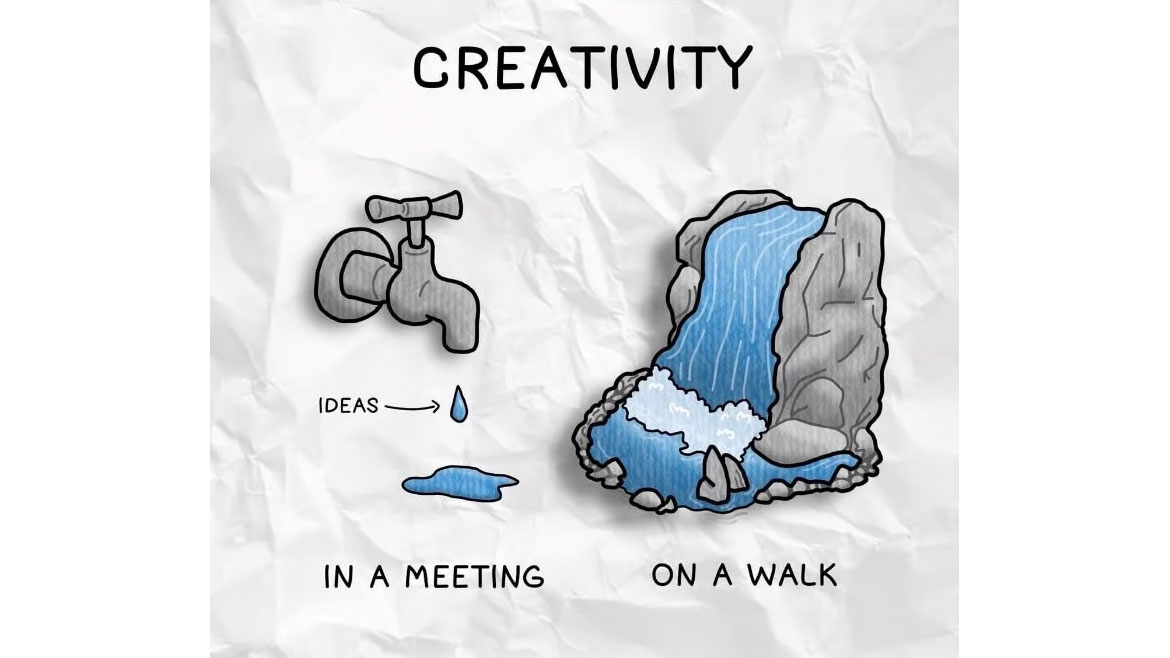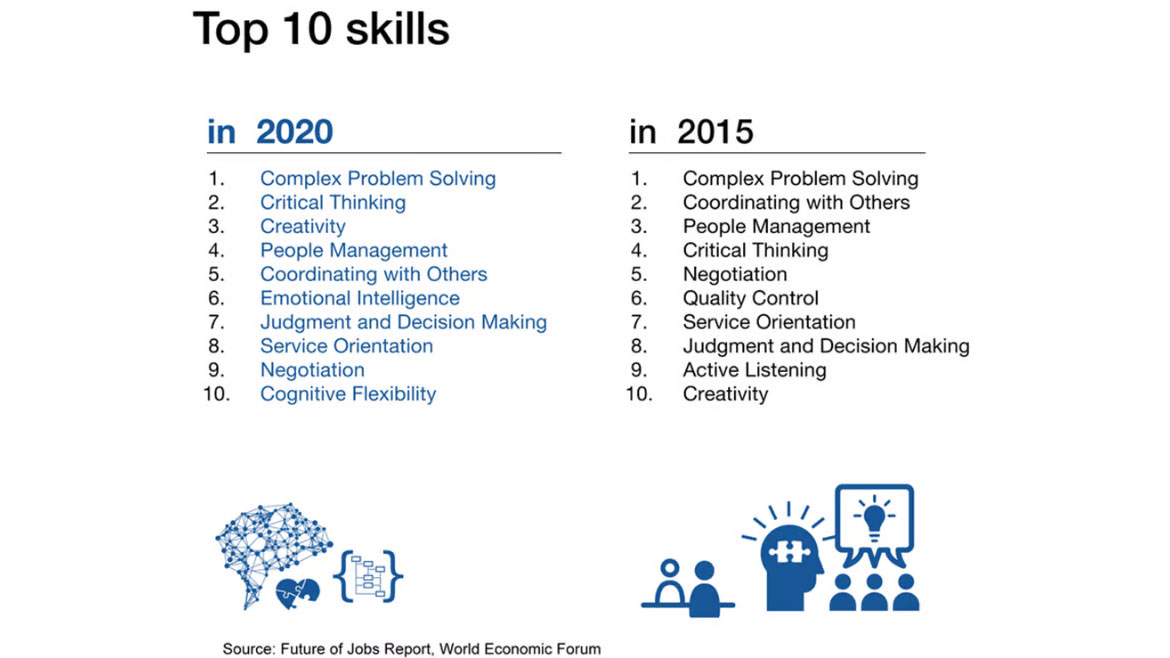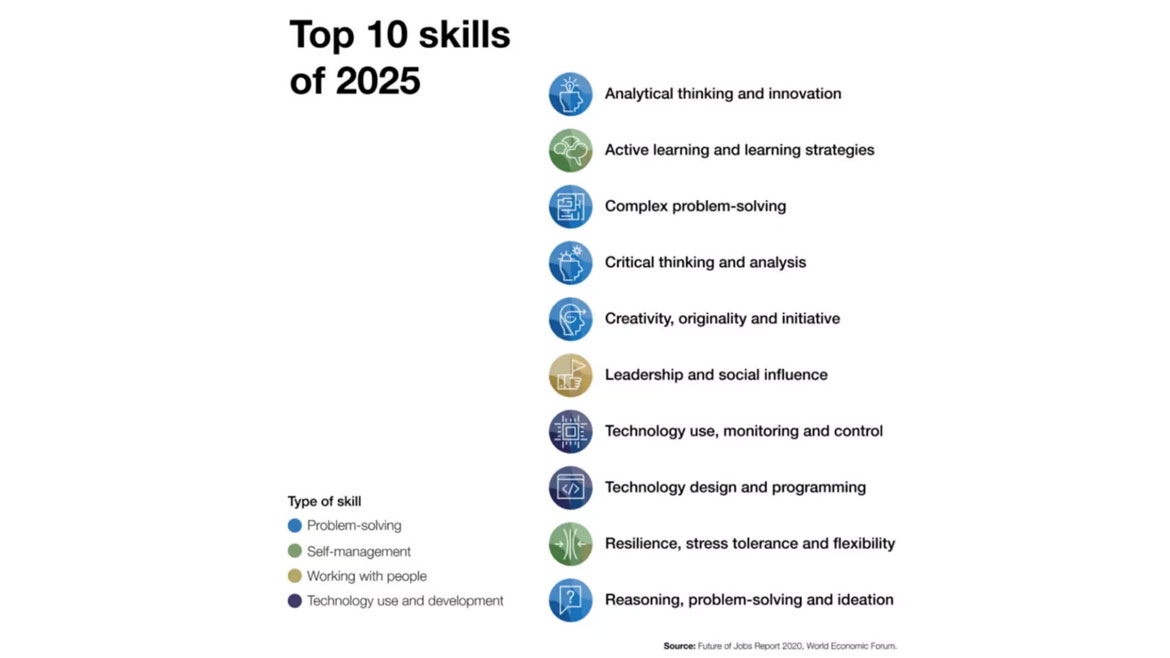In writing this column month after month, I recognize that while marketing insights and tips are helpful for many, a handful of folks don’t have the desire (or the time) to join in on their business’ marketing efforts. With this in mind, I wanted to think and “write outside the box” to focus on a topic applicable and relevant to all industry professionals and marketers alike. This topic is CREATIVITY.
It used to be that the title of ‘creative’ belonged to a select few within a business. The marketers, designers, advertisers, writers, and you get the gist... If you’re still stuck in this track of thinking, think again. Creativity has emerged as a necessity for success in the ever-evolving business landscape. It has even moved its way up the ranks as a top sought-after skillset in the workplace on the World Economic Forum’s Future of Job Report. For context, it went from #10 in 2015 to #3 for 2020. For context, it went from #10 in 2015 to #3 for 2020. For the 2025 forecast, it sits at #5. (or reference the charts below!)
60% of polled CEOs say that creativity in the workplace is seen as an important leadership quality.[1]
Creativity helps us think outside the box, solve complex problems, and discover innovative solutions that wouldn’t be available to us otherwise. It allows us to tap into our imagination, consider new perspectives, and develop fresh ideas. It can even enable us to improve traditional processes and methods to create unique, more effective, efficient, and adaptive approaches.
So, if creativity is essential and isn’t always necessarily applicable to the more artistic type, how can you make the most of it in business? Or perhaps you’re in a creative role, such as myself; how the heck do you get rid of the oh-so-dreaded “creativity block”? Fear not, my friends! Conquering creativity block or learning to build your “creative muscle” is achievable. Just as it is with accomplishing anything good and worthwhile, it just takes a bit of work. So, without further ado, here are some tips to help you get started.
1. Change things up: The key to unleashing creativity is often as simple as allowing yourself to step away from your desk or out of the office to have “room” to think outside the box. I know this tactic has proven successful for myself and one of my sales counterparts. Anytime we schedule a lunch meeting outside of the office, our ideas seem to flow in ways they don’t like when sitting within the office.
Try hosting a meeting in a new place, taking a break to spend some time in nature, or just taking a leisurely walk can even help – these activities can help open your mind to new ideas.
Even science proves it- walking, versus sitting, has been found to improve creative output by 60%[1]
[1] https://thrivemyway.com/creativity-stats/



2. Exercise your “creative muscle”: What better way to “piggyback” off a walking statistic than to pivot right into exercise?? Everyone has a “creative muscle”; the more you flex it, the stronger it gets (common sense, right?) Challenge yourself by trying out new activities like puzzles, crafts, journaling, or any other activity that allows you to explore your creative side and unleash your imagination. Innovation Advisor, Phil McKinney, has some wildly unique exercises he utilizes daily to keep his "creative muscle in shape"- check out his article.
Fun fact: One of the best innovators of our time, Steve Jobs, took up a calligraphy course after dropping out of college. While there wasn’t any foreseeable purpose to this class then, Jobs shared in his Stanford commencement speech that that class was responsible for Macintosh’s beautiful typography. Jobs said, "Creativity is just connecting things. When you ask creative people how they did something, they feel a little guilty because they didn't really do it; they just saw something. It seemed obvious to them after a while."
3. Get curious: Have you ever posed a question to somebody, trying to find out why they go about a task or situation in a certain way, only to be met with the widely used expression, “that's the way I/we have always done it”? Posing well-thought-out questions to others and even to yourself is a wonderful way to encourage creative thinking. When presented with a problem, don't just rely on what you know - inquire into alternate perspectives. It’s important to challenge your own assumptions, because frankly, humans are creatures of habit. As adults become adept at life, we develop habits of thoughts that serve us well based on experience and developed habits. It’s no secret that children tend to be far more creative and imaginative than adults, and perhaps that’s because they are less constrained by their own pre-established patterns of thought. They benefit from not knowing what is impossible- for them, anything and everything is possible.
Try approaching your next obstacle with genuine curiosity- ask questions when necessary, and it might just be how you come across your next unique concept or solution that has never been considered before!
Side Note: There’s no question we can learn a thing or two about creativity from the mind of a child. Check out this cute article that shares 10 Great Inventions Dreamt up By Children.
4. Reframe your assertion of "failure." Unlike children, adults are well-versed in rejection and past failures. One of the best-established connections between creativity and corporate culture is how failure is viewed or treated when an idea doesn’t work out as planned. The fear of failure (or the criticism that comes with it) can significantly hinder creativity and the general interest in exploring untried concepts. If you find yourself in this type of bind, you're not alone! We've all "failed" at one point or another when trying something new, and heck, all of us probably will again at some point.
Even if something doesn’t turn out as expected, you can rest assured that you have given it a shot and are opening the opportunity to learn something from the experience, which may even lead to a better idea to try. From here on out, try reframing the word “FAIL” to mean your First Attempt In Learning. After all, as Michael Scott from The Office said it best, “You miss every shot you don’t take. -Wayne Gretzky”.
5. Tap into resources and learn from others: Connecting with creative people, reading relevant books (or, if you’re like me, listening to podcasts & audiobooks), and immersing yourself in creative communities can be invaluable sources of inspiration. Learning from the successes and trials of others can help you further to identify effective methods or ideas in the workplace. For myself, groups like the American Marketing Association and Vistage have been great resources for me to bounce ideas off of other professionals and creatives and learn from others’ perspectives.
As the saying goes: “Creativity is intelligence having fun!” So go have some fun- regardless of your position in marketing, finance, or sales- tap into your creative side and see the difference. Embrace it, celebrate it, and use it to fuel innovation and take your business to the next level to get ahead.




